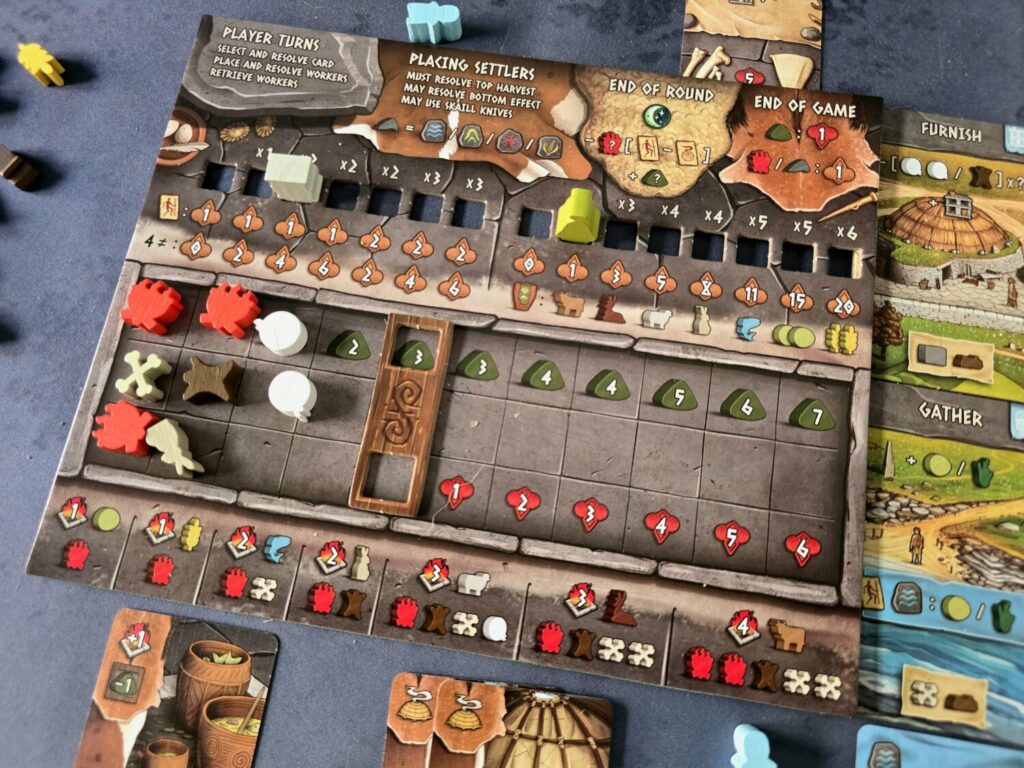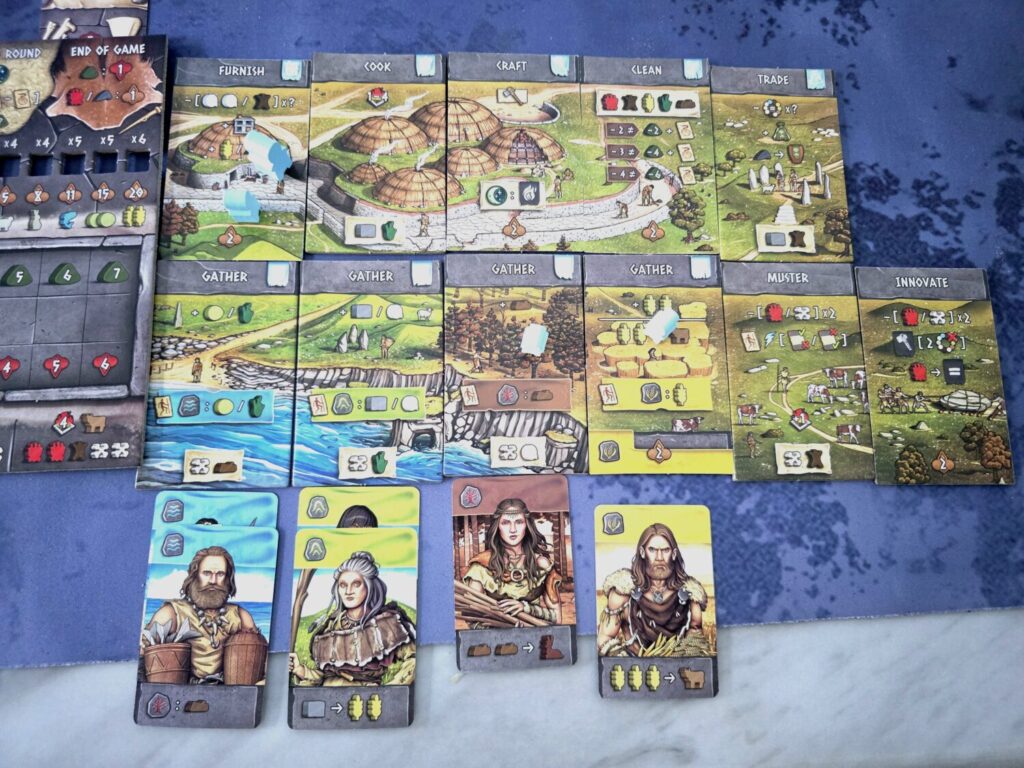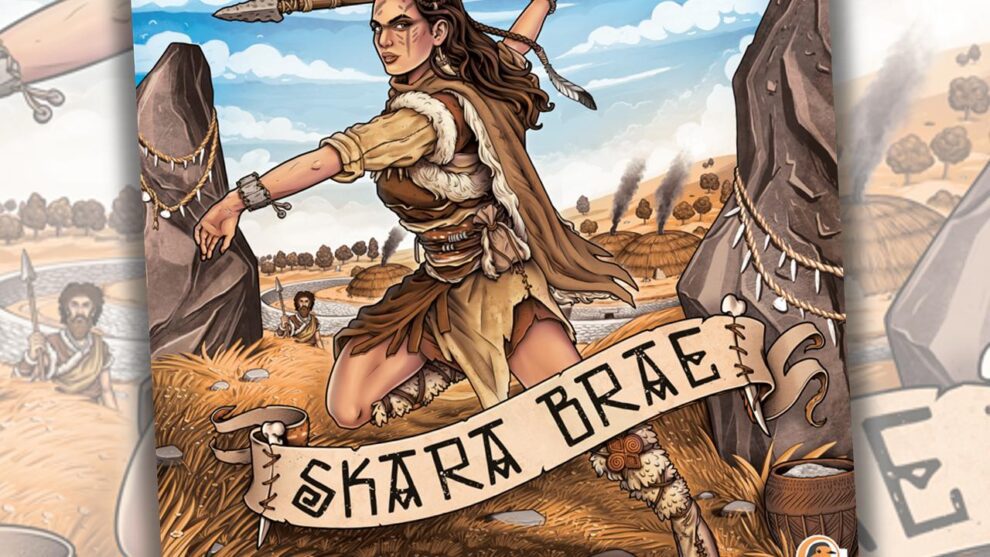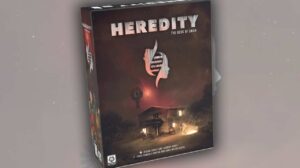Disclosure: Meeple Mountain received a free copy of this product in exchange for an honest, unbiased review. This review is not intended to be an endorsement.
Standard Shem
I’m always amazed at the rate at which Shem Phillips cranks out his games. I also appreciate that those small box, big game experiences expand historical periods not commonly found in gaming, whether it’s the Abbasid Caliphate (Wayfarers/Scholars/Inventors of the South Tigris), ancient Jerusalem (Ezra and Nehemiah), and now ancient Scotland with Skara Brae.
Often with his games, Shem takes a game mechanic we all know and adore and adds additional layers, giving it a fresh spin. Here, the main focus is on resource management. Thematically, players are ancient communities who did not discard their waste (midden), but rather buried it in giant mounds, which future generations dug out to create shelters against the cold.
You could say this is about civilization’s first concept of waste management and landfills. If anything, playing this game gave me some interesting history tidbits that I’ll definitely be using as a future party story.
Side note: This might be a record for games I’ve played, but I kid you not, this game has SIXTEEN different resources. So break out those chit holders.

Waste Management
Skara Brae plays over four rounds where players gather resources to build their settlements, recruit more villagers, and make sure there’s enough food to feed everyone by round’s end. Players have a storage area for resources, and while there’s technically no limit, a moving slider tracks the storage ceiling. Exceeding that ceiling produces more waste at the end of the round, worth negative endgame points.
On each turn, players draft village cards. A player may pass (still receiving a draft after everyone else) to move up in turn order for the next turn.. Drafted cards generate resources and often include an optional action, such as resource conversion. After drafting, players place workers on their personal boards to activate actions: upgrading tiles, trading, or cooking (converting resources into food). Workers are retrieved immediately after placement. Players start with one worker in the first round and gain one per round thereafter, ending with twelve worker actions in the final round.

At the end of each round, every villager must be fed one food. Unfed villagers are discarded.
Points come from village cards, set collection, upgraded tiles, and leftover resources. Negative points come from waste and the slider position in storage.
Nearing Storage Limit
I’ve read that the flow of Skara Brae is similar to Legacy of Yu, which I haven’t played yet. Both focus on resource management, though in Legacy of Yu, the tension comes from external invaders. In Skara Brae, the pressure is internal—balancing your own greed. Amassing resources sounds great, but as your storage ceiling grows, so does your waste output, which hurts you later. Feeding villagers adds another layer of tension: the bigger your engine, the more food you’ll need, and falling short can cost you workers and future points.
Thankfully, there’s a “clean” action that clears waste, moves your slider back, and even rewards you with an animal. Animals can later be converted into food and building materials.
Is it groundbreaking? Not really—it’s a resource converter game at its core. But Shem makes it smooth and satisfying. You feel your engine grow stronger, your actions more efficient, and your turns more productive. The race to upgrade building tiles is a fun, rewarding loop that feeds directly into your next decision.

It’s a constant puzzle of “I need this to become that, which will become this,” and figuring it all out in just a few worker actions is immensely satisfying. Roofs that reduce food requirements and upgraded buildings offering passive bonuses keep the optimization puzzle engaging. It’s a game where you can math it out in advance, should you wish.
Solo Brae?
If you’ve never played a Shem Phillips game, it’s worth noting that they often lean toward multiplayer solitaire, and Skara Brae fits that mold. While everyone’s busy running their own mini-economy, heads only lift when it’s time to draft cards. That draft is the main interactive moment, and since upcoming cards are visible, it adds a small bit of tension and competition. The ability to “pass” while still getting a card afterward is a neat little wrinkle that helps you jockey for position.

I’ve played both solo and multiplayer, and honestly, solo might be the best experience. The core gameplay is the same, but the solo mode introduces randomly drawn goals that must be met to avoid losing points. It also adds task cards—one-time “free” actions that spend resources without using a worker, easing the optimization crunch. I kind of wish this system existed in multiplayer too, but that’s a minor gripe in an otherwise polished design.
Outside of that, the only variability comes from the single special action tile dealt at the start of the game.
Settlers of Shem
I haven’t played all of Shem Phillips’ massive catalog, but his designs consistently strike that balance between accessible and engaging—especially for solo or low-interaction fans.
Do you need them all? Probably not. But if you love resource management and efficiency puzzles, Skara Brae is absolutely worth checking out.
Just remember: waste not, want not.










